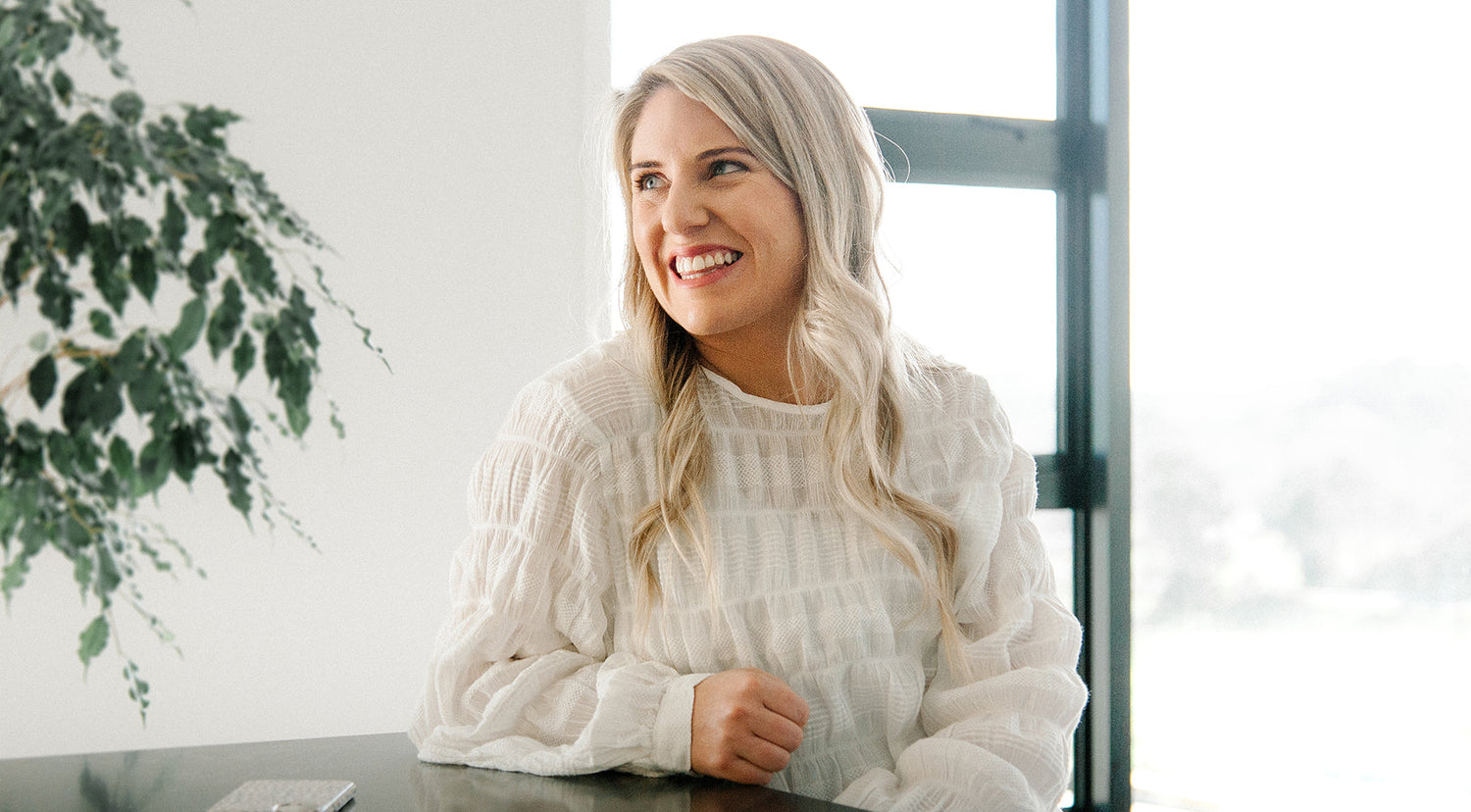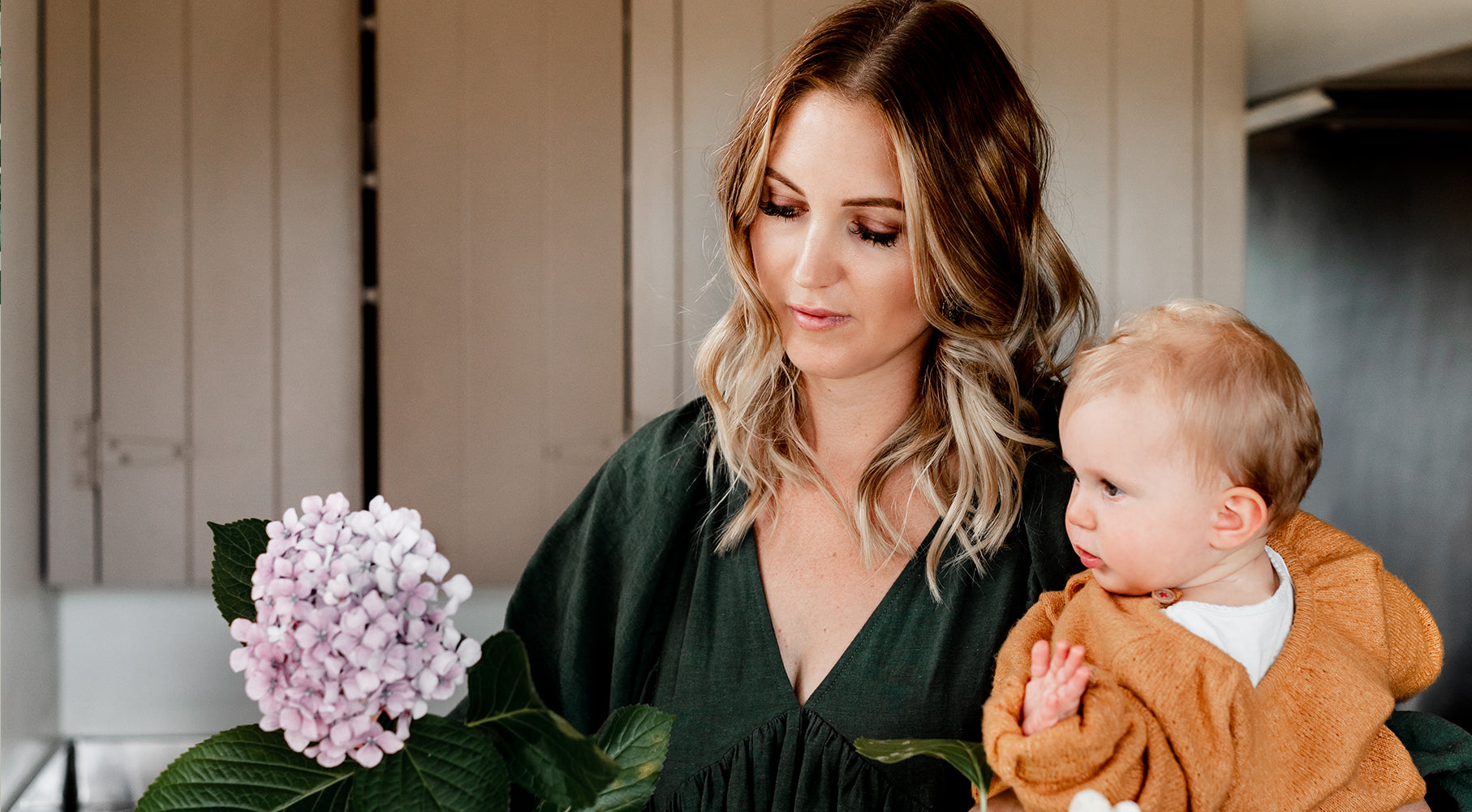Pregnancy and postnatal osteopath Sarah Boughtwood has heard her fair share of questions during her career; everything from how to alleviate aches and pains to what to do to prep for labour. Here she breaks down the ten most commonly asked questions and the answers to them for our Haven community.
1. Is a pregnancy pillow necessary?
Whilst there are a lot of pregnancy pillows on the market, I personally think pillows are very subjective to the individual person and their needs. I generally recommend you try placing ‘normal’ pillows in the following locations to find your individual comfort zone (which areas work for you will depend on your needs, as all our pregnancies are different):
- 1-2 pillows under your head
- 1 pillow lengthways under your hipbone and belly
- 1 pillow wedged behind your lower back
- 1 pillow between your knees
- 1 pillow between your ankles
2. Do I need a pregnancy belt?
Generally speaking, the answer is no. However, if you do wish to use one, sourcing a proper belt from your health professional is recommended rather than something you buy yourself, which in most cases isn’t strong enough to do the job required. As an osteopath, I won’t recommend a belt straight away in most situations. The problem with a belt is it does the job of your muscles for you. I would prefer you did strengthening exercises to build muscular support rather than rely on a belt which isn’t always practical to wear.
3. When do I need to start sleeping on my side?
I recommend this very early on into pregnancy to form a habit, rather than leaving it until 20 weeks (especially if you are not a side sleeper naturally). The reason it is recommended to sleep on your side, is lying on your belly physically becomes impossible but lying on your back is dangerous, and the weight of your belly can compress the blood supply to the baby. Try sleeping back to back with your partner or sleeping on your side with a pillow wedged into your lower back to help prevent you waking on your back.
4. How do I best prepare for labour?
My top tip is to relax and not have too many preconceived ideas or expectations. Labour itself is a world of unknown as anything could happen, so I recommend having an ‘it will be what it will be’ approach and as long as you and your baby are both happy and healthy, that is truly all that matters. Physically leading up to birth I would recommend seeing someone regarding any aches and pains you may have. As an osteopath, I help pregnant women by making sure their spine, pelvis and hips are as mobile as possible with their muscles and ligaments all working in sync. Light and gentle exercise is also recommended throughout your pregnancy to help keep you in the best shape possible.
5. When should I see an osteopath when I am pregnant?
This is very case by case. Some people breeze through pregnancy with no aches and pains and don’t need any help at all, whilst others need help with their body adapting to pregnancy. Each trimester can cause different aches and pains including headaches, migraines, back pain, sore hips, sciatica, rib pain, reflux, constipation, lower back pain, round ligament pain, SPS (pubic joint/pelvic joint) pain, carpal tunnel syndrome, restless legs syndrome and tailbone pain. I specialise in treating pregnant and postnatal women, making them as comfortable as possible during these times.
6. What does an osteopath do?
Osteopathy is a safe and effective form of hands-on, physical therapy that treats the whole body rather than just where a patient is sore. The reason for this is that often where we feel pain is most commonly a result of a few areas of the body not working well. For example, a patient with neck pain can be due to the neck not working well and being too tight — but more often it comes from the whole back and shoulders not working well, which in turn, strains the neck. Additionally, we look beyond the physical body to ask lifestyle questions that might help to pinpoint the cause e.g. posture at work, sleeping position, diet (especially headaches and migraines) and so on. Tailored advice is given to patients which may include stretches, exercises, posture correction and so on. We are ACC registered and no referral is required.
7. Can I exercise?
Yes, and please, please do! The relaxin hormone in particular makes our muscles, ligaments and joints ‘floppy’ which is largely the cause of pregnancy aches and pains. To counterbalance this, I highly recommend exercise. The type of exercise I recommend depends on what you will stick to. I think pilates, yoga, walking, swimming and light weights are all great options. There are some amazing personal trainers that specialise in pregnancy and postnatal women. The general rules of exercise are: ‘good pain’ only, nothing that triggers a ‘bad pain’ sensation, do not take up a new form of exercise without supervision of a health professional and start off small, in both duration and intensity.
8. When should I see an osteopath after birth?
There is no right answer. Treatment is always tailored to the individual so if you have stitches or a fresh C-section scar, those areas will be avoided and the rest of the body treated. A general check-up is recommended around 6 weeks after birth and I cannot stress enough seeing a women’s pelvic physio both during pregnancy and after birth. Common reasons I see postpartum women after birth relate to delivery trauma and adapting to motherhood. This includes aches and pains relating to breast or bottle feeding, lifting and carrying babies, prams and car seats, residual pregnancy aches and pains and so on. Motherhood generally means you are now using your body in a very different way, so aches and pains can arise. Plus, your body is ‘settling’ back down to its pre-pregnancy/new parenthood form which takes months.
9. How can I fix reflux?
Reflux in pregnancy is due to the relaxin hormone causing the sphincter at the top of the stomach to become ‘loose’, thus allowing stomach acid to go back up into your throat. This can cause a burning sensation, especially at night time. In addition, your growing belly can compress the stomach, physically pushing stomach acid back up your throat. A few ways you can help avoid reflux include eating smaller meals, having dinner early in the evening and remaining upright for 3 hours afterwards, sleep sitting slightly upright and keeping a food diary of which foods make your reflux worse. You can also ask your health professional about medications that might help. Osteopathic treatment helps by loosening the area around your ribcage and stomach to help remove any excess pressure off the area.
10. How can I fix pubic joint pain in pregnancy?
The pubic joint is located in the front of your pelvis, joining the left and right sides of the pelvis. Naturally, due to the relaxin hormone, in pregnancy this joint widens by 3-7mm. In some women this can cause a lot of pain, especially rolling over at night, getting in and out of the car and getting dressed. My number one top tip is always keeping your knees lightly touching or no further than hip width apart. To help with the pain rolling over at night, try sleeping with your legs loosely tied together. This can be the cord off your dressing gown or a very stretchy theraband. Some women find this very distracting and can’t sleep like this but others swear by it. So is worth a try! Osteopathic treatment is aimed at loosening any tight muscles around the pubic joint, getting the hips and spine working as well as possible to reduce any further strain and reducing any local inflammation.




